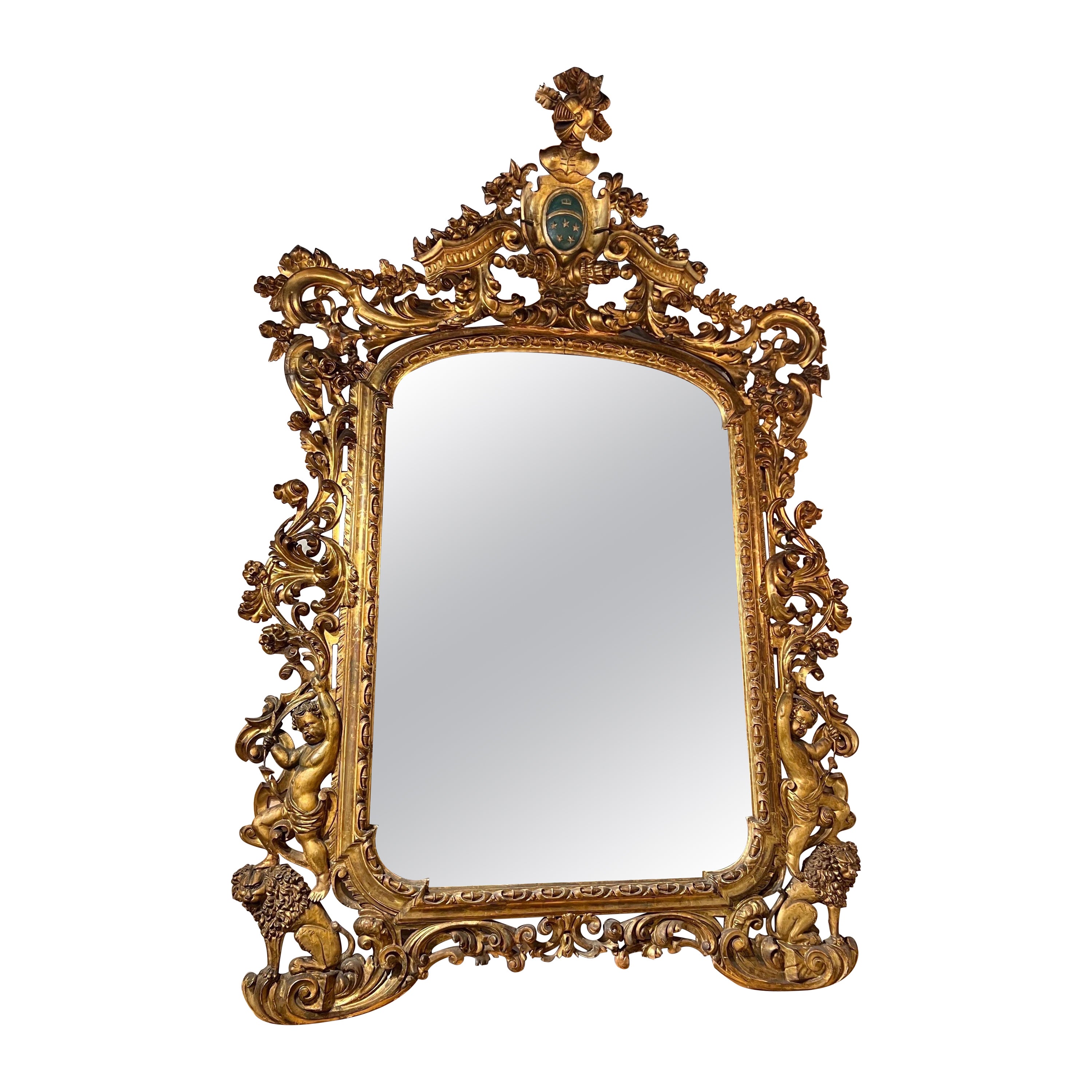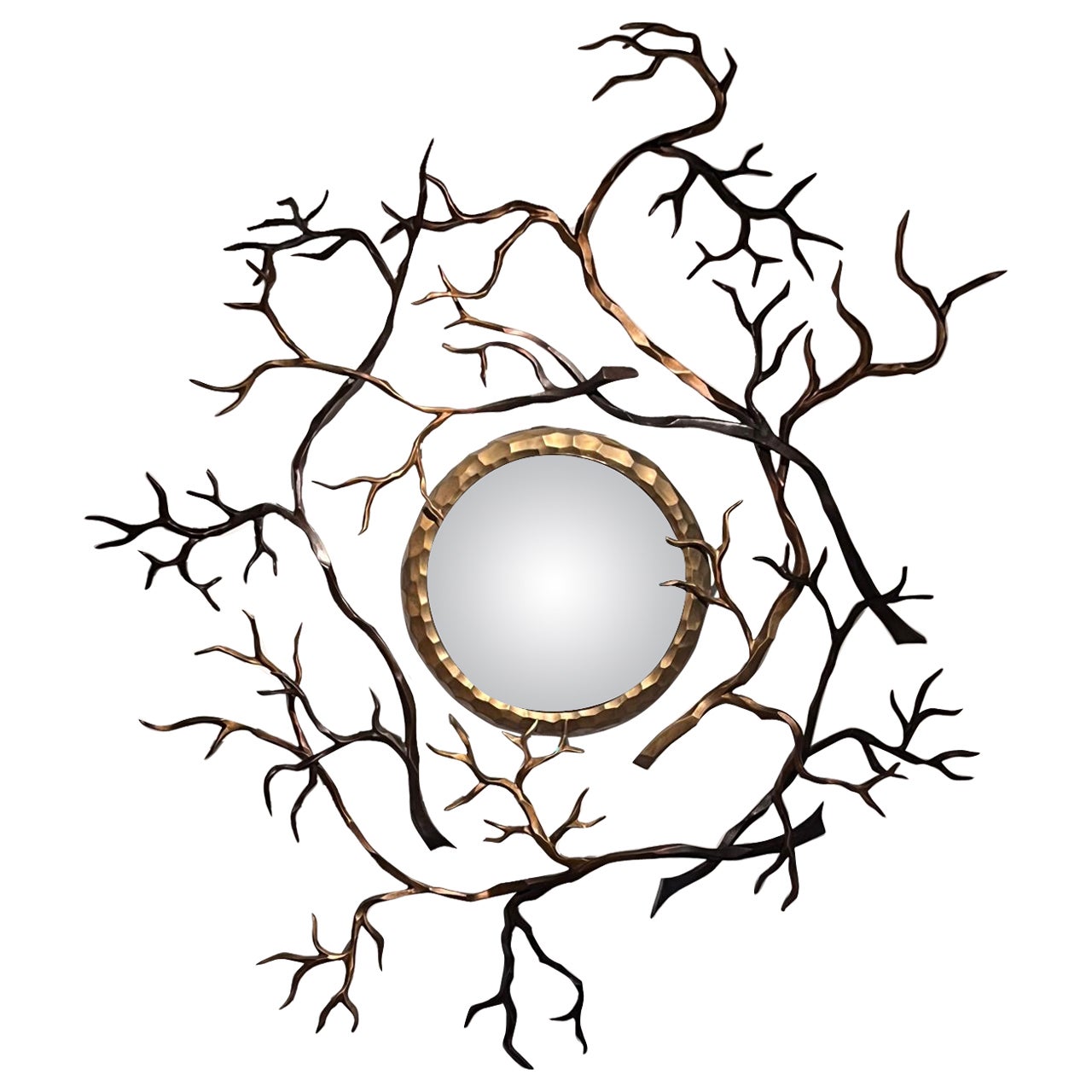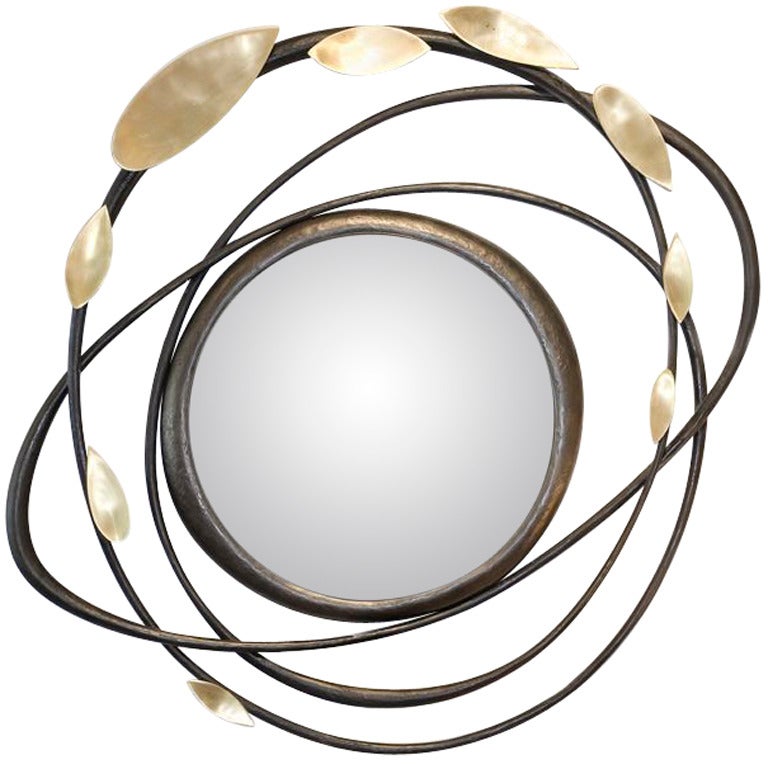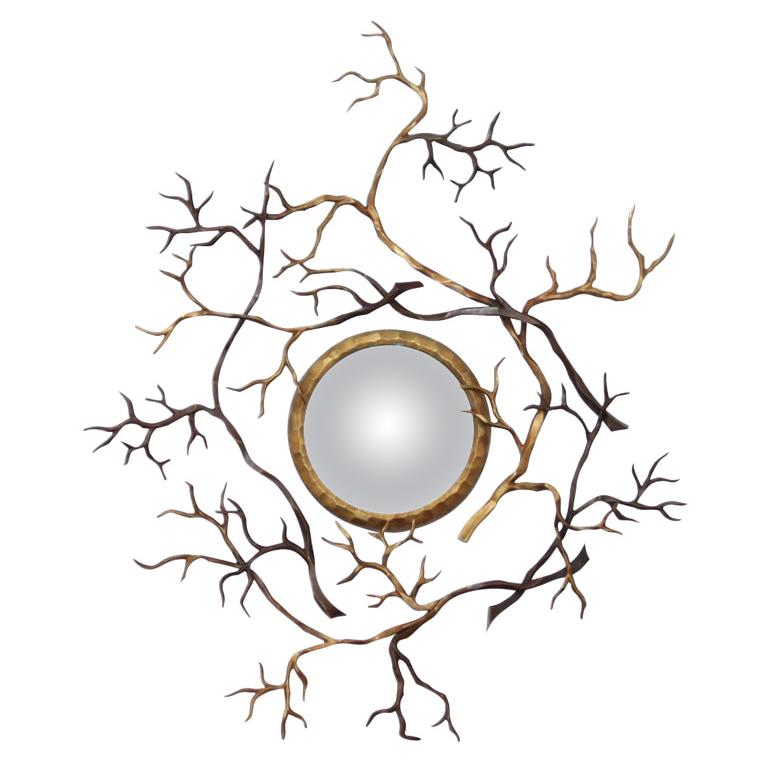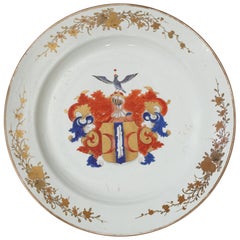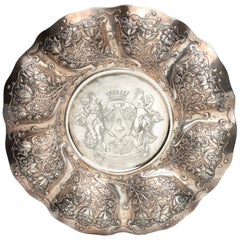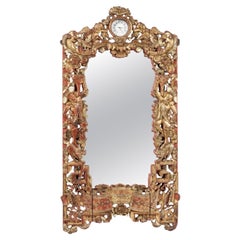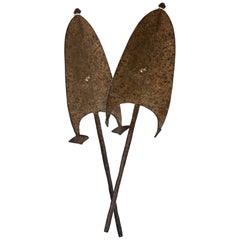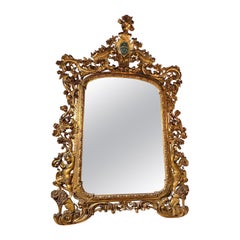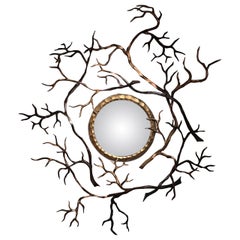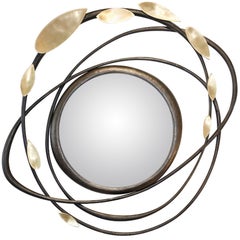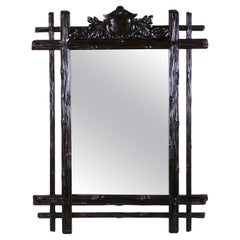Items Similar to A mirror with the Medici coat-of-arms by Leonardo van der Vinne (act. 1659-1713)
Want more images or videos?
Request additional images or videos from the seller
1 of 7
A mirror with the Medici coat-of-arms by Leonardo van der Vinne (act. 1659-1713)
About the Item
Florence, late 17th-century
The octagonal mirror decorated with scrolling vines and flowers the top and bottom each decorated with the Medici coat-of-arms in opposite colours, the somewhat larger black empty spaces very finely inlaid with hair-like lines of wood or metal.
H. 49 x W. 42 cm
Provenance:
Noble collection, Belgium
- Dimensions:Height: 19.3 in (49 cm)Width: 16.54 in (42 cm)Depth: 3.15 in (8 cm)
- Materials and Techniques:
- Place of Origin:
- Period:Late 17th Century
- Date of Manufacture:Late 17th century
- Condition:Wear consistent with age and use.
- Seller Location:Amsterdam, NL
- Reference Number:1stDibs: LU5458241341272
About the Seller
5.0
Recognized Seller
These prestigious sellers are industry leaders and represent the highest echelon for item quality and design.
Established in 1985
1stDibs seller since 2020
23 sales on 1stDibs
Typical response time: <1 hour
- ShippingRetrieving quote...Shipping from: Amsterdam, Netherlands
- Return Policy
Authenticity Guarantee
In the unlikely event there’s an issue with an item’s authenticity, contact us within 1 year for a full refund. DetailsMoney-Back Guarantee
If your item is not as described, is damaged in transit, or does not arrive, contact us within 7 days for a full refund. Details24-Hour Cancellation
You have a 24-hour grace period in which to reconsider your purchase, with no questions asked.Vetted Professional Sellers
Our world-class sellers must adhere to strict standards for service and quality, maintaining the integrity of our listings.Price-Match Guarantee
If you find that a seller listed the same item for a lower price elsewhere, we’ll match it.Trusted Global Delivery
Our best-in-class carrier network provides specialized shipping options worldwide, including custom delivery.More From This Seller
View AllA pair of large Chinese export porcelain dishes with the Valckenier coat-of-arms
Located in Amsterdam, NL
Qianlong period, circa 1735
The dishes are in the so-called encre de chine style and painted on the glaze in rouge de fer and the dominant colours blue, red, pink, black and gold. I...
Category
Antique 18th Century Chinese Ceramics
Materials
Porcelain
Dutch Colonial Silver Dish with the Von Pfeffel Coat-of-arms, 17th Century
Located in Amsterdam, NL
An unusual Indonesian lobbed silver dish
Jakarta (Batavia) or Coromandel coast, third quarter 17th century, apparently unmarked
The eight lobbed dish exuberantly decorated with floral motifs, with the middle section replaced, consisting of indistinctly marked German silver from the early 19th century, bearing the coat-of-arms of the Von Pfeffel family.
Diam. 30.5 cm
Weight 461 grams
Note:
Lobbed silver dishes with exuberant floral decorations were characteristic of the decorative arts in the Netherlands in the first half of the 17th century. This style of floral decoration was adopted by silversmiths as well as by furniture makers working on the Coromandel Coast and in Batavia, often by workers who had fled the Coromandel Coast because of war and famine. In Batavia this style was known as “Custwerck” (work from the Bengal coast).
These lobbed dishes are seldom marked. Only after 1667 the use of the town mark became obligatory in Batavia but only for silver made in Batavia not for silver imported in Batavia from other VOC settlements. The engraved coat of arms in the centre is a replacement of the original centre.
The coat of arms can be identified as those of Christian Hubert von Pfeffel (1765- 1834). As a diplomat, statesman, ambassador of Bavaria in London and Saxony and councillor to the King of Bavaria, he was made “Freiherr” in 1828 and since then used this coat of arms. His son Karl Maximilian Friederich Hubert Freiherr von Pfeffel (1811-1890) in 1836 married Karoline Adelheid Pauline von Rottenburg (1805-1872), the natural daughter of Prins Paul von Württemberg (1785-1852) and his mistress Margrethe Porth. Paul was the jounger brother of the King Wilhelm I of Württemberg (1781-1864). The heraldic motto of the von Pfeffels Vur Schande habe den Huot means as much as “Beware of Shame”. Christian Hubert Theodoor Marie Karl von Pfeffel Karl Maximilian’s grandson was the last male in the von Pfeffel line. His daughter, Marie Louise (Paris in 1882 - Cornwall 1944), born and grown-up in France, changed her name in de Pfeffel. She was the great grandmother of Boris Alexander de Pfeffel Johnson, the present British Secretary of State. None of the members of the von Pfeffel family had any direct links with the Dutch East Indies but indirectly by way of the Royal House of Württemberg they did.
Sophia Frederika Mathilda von Württemberg (1818-1877), daughter of Wilhelm I King of Württemberg, in 1839 married Willem III...
Category
Antique Late 17th Century Indonesian Dutch Colonial Sterling Silver
Materials
Silver
Charming carved gilt-wood Chinese export mirror frame watch-stand with Europeans
Located in Amsterdam, NL
A charming carved giltwood Chinese export mirror frame with a watch-stand
Canton, Qing Dynasty, early 19th century
H. 65 x W. 34.5 cm
At the top of the frame, two angels are suppo...
Category
Antique 19th Century Chinese Qing Wall Mirrors
Materials
Giltwood
$16,831
Free Shipping
Two spearheads used as currency by the Bangala people of the Congo
Located in Amsterdam, NL
Democratic Republic of Congo, late 19th century
These spearheads looked like weapons, yet they were hardly ever used in battle. Rather, they functioned as a kind of money that was u...
Category
Antique Late 19th Century Congolese Tribal Art
Materials
Iron
Japanese Nagasaki Export Lacquer Box with Depiction of the 'Trippenhuis'
Located in Amsterdam, NL
A Japanese Nagasaki export lacquer box with mother-of-pearl depiction of the Amsterdam ‘Trippenhuis’
Edo-period, circa 1830
H. 12.5 x W. 24...
Category
Antique 19th Century Japanese Edo Lacquer
Materials
Mother-of-Pearl, Lacquer
A Japanese export lacquer box with depiction of the Grand Hotel, Yokohama
Located in Amsterdam, NL
Meiji period, circa 1873-1887
The black lacquered box decorated in maki-e and hiramaki-e gold, with on the lid a European style building complex and several Japanese and European figures walking along a street in the foreground. The sides are finely decorated with several insects and the inside with several compartments and nashiji decoration.
H. 7.4 x W. 29 x D. 25.7 cm
After the Americans forced Japan to open their harbours to the outside world and take part in international treaty and trade around the mid 19th century, the formerly feudal society rapidly changed. Japan was now focussing on an industrial future. One of the major international ports was Yokohama with its foreign embassies and warehouses - which attracted a great number of visitors of all sorts. For the higher society visiting Japan for the first time a new and ‘Western’ hotel had to be realised; hence the construction of The Grand Hotel on Kaigandori.
The hotel was opened on August 16, 1873 (Meiji 6) and was soon considered the height of Western culture and elegance in Japan. The building probably depicted on this box, designed by American architect Richard P. Bridgens (リチャード・ブリジェンス, 1819 -1891), is the original hotel...
Category
Antique 19th Century Japanese Lacquer
Materials
Gold
You May Also Like
Monumental 18th-19th century Giltwood mirror with coat of arms
Located in Charleston, SC
Monumental and impressively over the top 18th-19th century Giltwood mirror, likely Italian. Standing 8’ tall by over 5’ wide, this mirror features heavily carved Giltwood foliage, ch...
Category
Antique 19th Century European Wall Mirrors
Materials
Mirror, Giltwood
"Branchs" Mirror in Patinated Bronze by Hervé Van Der Straeten
Located in Saint-Ouen, FR
Hervé Van Der Straeten
"Branchs"
Contemporary bull's-eye mirror in patinated bronze
France 2008
H. 144,78cm
W. 127 cm
D. 7.62cm
Category
Early 2000s French Post-Modern Wall Mirrors
Materials
Bronze
Hervé van der Straeten, "Voltige" Mirror, France, 2011
By Herve Van Der Straeten
Located in New York, NY
Contemporary polished and black-patinated bronze bull's eye mirror by Hervé van der Straeten.
Monogrammed:HV.
Limited edition of 40.
Category
21st Century and Contemporary French Convex Mirrors
Materials
Bronze
Black Forest Rustic Wall Mirror with Coat of Arms Carving, Austria, circa 1870
Located in Lichtenberg, AT
Fantastic looking rustic Black Forest wall mirror from the late 19th century in Austria around 1870. Hand carved out of fine basswood this rural mirror shows an absolute amazing desi...
Category
Antique Late 19th Century Austrian Black Forest Wall Mirrors
Materials
Softwood, Mirror
Mid-Century Modern Jack Van Der Molen Large Mirror
By Jack Van der Molen
Located in Medina, OH
Large mirror by Jack Van Der Molen. In great condition, the mirror itself has a "dirty" look to it, but it is its style or age (see fifth picture). ...
Category
Vintage 1970s Mid-Century Modern Wall Mirrors
Materials
Oak
Hervé van Der Straeten, "Branches, " Bronze Mirror, France, 2008
By Herve Van Der Straeten
Located in New York, NY
Contemporary patinated bronze bull's eye mirror by Hervé van der Straeten.
Monogrammed: HV
Measures: Diameter of bull’s eye mirror 14”.
Category
21st Century and Contemporary French Convex Mirrors
Materials
Bronze
Recently Viewed
View AllMore Ways To Browse
Pearl Vine
Leonardo Collection
Belgium Teak
Bone And Teak
Pearl And Bone Inlay
Octagonal Teak
Teak Bone Inlay
Italian Ebony Bone Inlay
Van Der Vinne
Tea Table Chair
Teak Log
Teak Scandinavian 1960S Coffee Tables
Thonet Chair Leather
Tile Mosaic Wall Art
Unique Swivel Lounge
Venetian Rug
Victorian Porcelain Plates
Viennese Biedermeier
